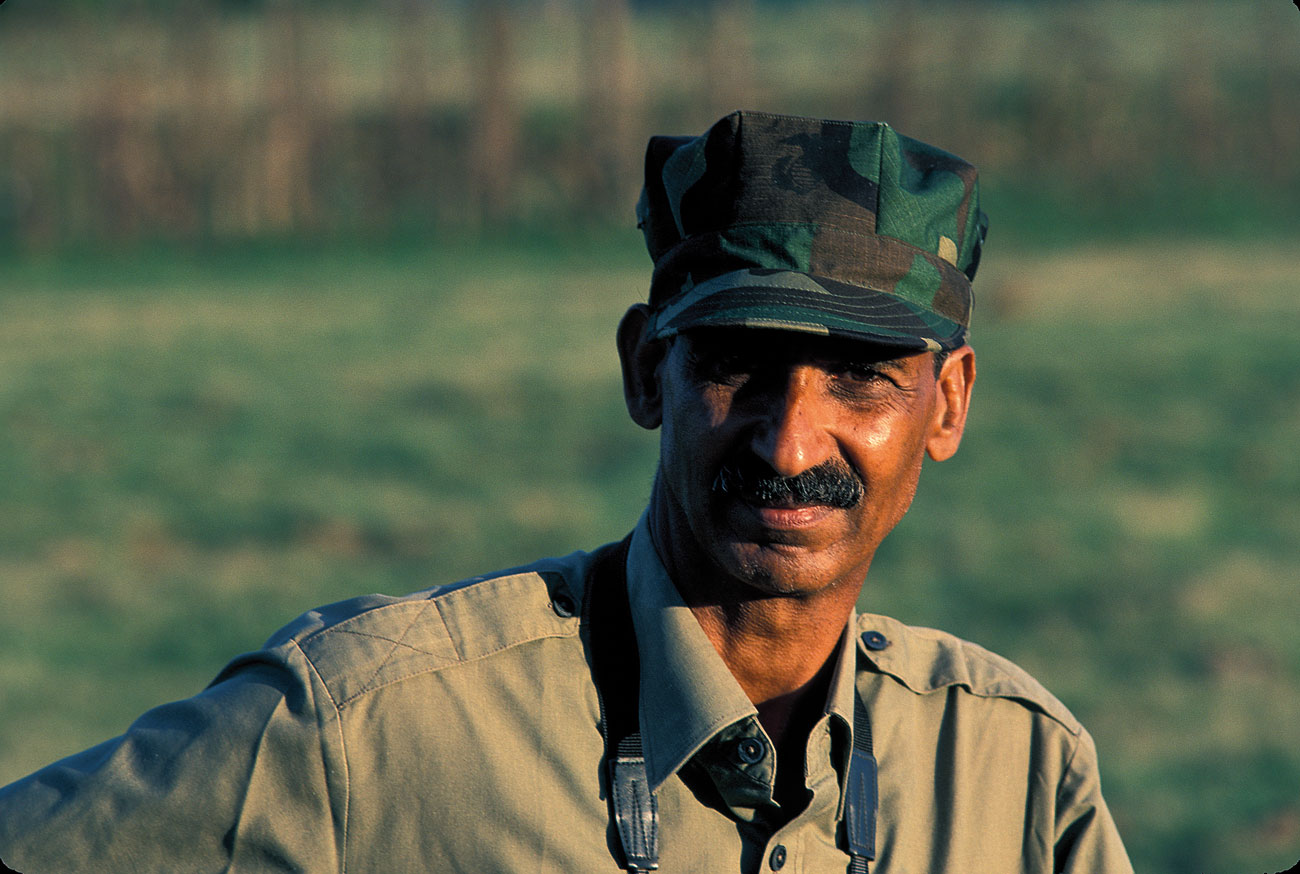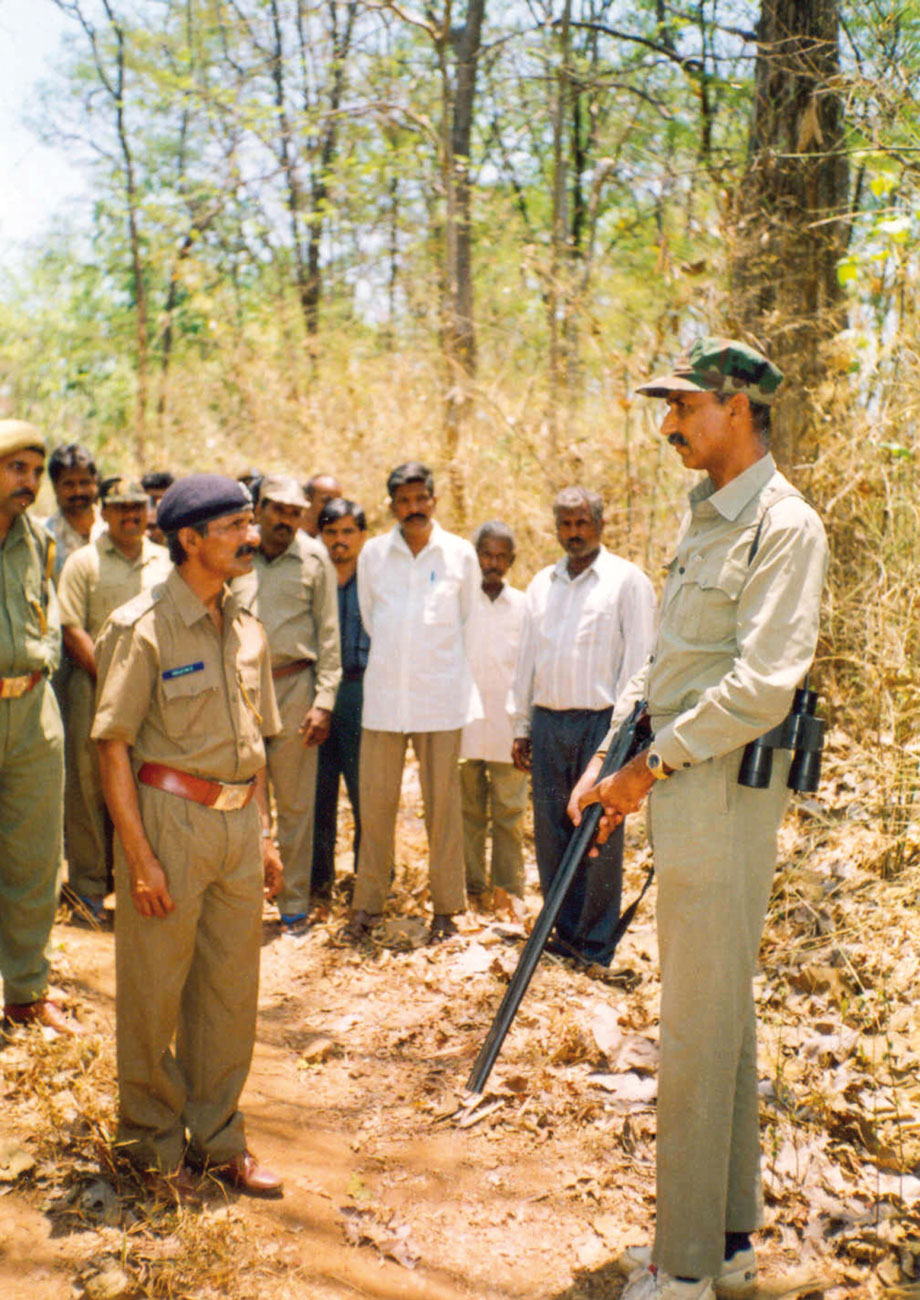K.M. Chinnappa: March 20, 1941 - February 26, 2024
First published in Sanctuary Asia,
Vol. 44
No. 4,
April 2024
By Praveen Bhargav
“The brave die never… though they sleep in dust: Their courage nerves a thousand living men.”- Minot J. Savage
Kotrangada Medappa Chinnappa, India’s bravest and tallest ranger, left us on February 26, 2024. He was 83, and had been homebound for a few months on account of age-related ailments. In what was to be the last conversation of our close, four-decade-long association, we had spoken the previous evening about the raging debate on human-elephant conflict in Wayanad. The next afternoon, I got a call that he had passed away peacefully at 11 a.m. at home, with his wife Radha and daughter-in-law Deepa by his side.
I first met Chinnappa in Nagarahole in 1983. After subjecting me to his patent ‘acid tests’, he accepted me as a student. This was a major turning point in my life. Walking with him in the forest – every field visit was invariably to Nagarahole – was a treasured experience, during which I slowly began understanding field craft and gained insights into protecting a national park.

Photo: Sanctuary Photolibrary.
Little did I know how close our association would become. How we would become partners in conservation efforts, campaigns, court petitions and law enforcement training programmes.
The centrepiece of Chinnappa’s work was the formation of a multi-tiered protection system comprising foot patrols, mobile patrols, protection camps at strategic locations, and strictly-controlled check posts. In particular, the night mobile patrols contributed significantly to minimising illegal hunting in Nagarahole. Chinnappa, along with his trusted staff and an effective network of informants that provided actionable human intelligence, had systematically profiled active gangs of hunters, and went after them tirelessly. Every gunshot was monitored and tracked. He used his extraordinary skills to track hunters who, he had figured out, always used different paths to enter and exit, and laid ambushes into which they walked in unsuspectingly. One unique technique that he had developed was to drop off a couple of guards for an ambush without stopping the jeep. The hunters would assume that the jeep patrol had moved on, not realising that the guards lay in wait!
Chinnappa’s enormous physical courage and leadership while leading a small but dedicated posse of forest guards were truly legendary. Not many know that he maintained great secrecy during operations. For instance, one evening he left Nagarahole Range on the pretext of visiting Mysore for a few days. But he quickly doubled back and entered the park by a different road, and waited at a strategic location to check if any hunters entered after information of his departure reached them.
I had the privilege of walking with him in 1990 on my first transect on Line Number Six in Nagarahole. I discovered that he would spot and count animals before I could, and would then check that I had entered the correct data. Such was the rigour and level of population estimation efforts, which is sadly missing these days in official exercises. In 1996, I had the opportunity to walk in the famous Bisanpura meadow in Kanha with Chinnappa, where we ended up with more than 20 sightings!
Among the incidents that reflect various facets of Chinnappa’s quirky personality, a few are etched in my memory. In the early 90s, a proactive Chief Wildlife Warden (CWLW), who knew and respected Chinnappa’s field skills, organised a field session for young IFS officers. As they were walking in the forest, Chinnappa pointed to a tree that a tiger had sprayed on. One of the officers mockingly remarked that there was nothing to prove it. Chinnappa suggested that he step closer and take a whiff. The IFS officer nonchalantly sniffed near the tree, instantly reeling away as the pungent odour hit him. Years later, Chinnappa narrated that the CWLW immediately told his officers, “This is exactly why I organised a session with Chinnappa.”
After his early retirement, Chinnappa headed protection training at the NGO Wildlife First. We went to Tadoba in 1998 for a field training programme, where he boldly announced that he could manage to communicate in Hindi! I was not convinced. During a session, a forester presented his problem: the lack of staff quarters was a concern as Forest Department staff faced the ire of locals when they returned home after apprehending someone from the same village. Chinnappa had a solution and as he enthusiastically attempted to respond, he ended up with just – “Yeh woh, woh yeh…” He quickly told me in Kannada – “Helri PB” – meaning, “PB, you respond!”

Photo: Sanctuary Photolibrary.
Chinnappa had a coarse sense of humour and would regale us with many anecdotes while travelling. He also freely expressed himself. One summer Krishna Prasad (KP) – then a member of the Project Tiger Steering Committee, Chinnappa and I were going to Ranthambhore from Delhi by train. At one of the stops, a man got in, took the empty seat next to Chinnappa, removed his slip-on shoes and sat cross-legged with his nylon socks on. Chinnappa’s sharp sense of smell was his undoing! He uncoiled himself and aggressively turned to his co-passenger and blurted out in broken Hindi – “Nikalo ji smellu!” The poor man did not know what hit him and quickly scurried away!
As age inevitably began catching up, Chinnappa ate frugally, and began losing weight. A series of diagnostic tests in 2022 in Bengaluru revealed nothing abnormal. While returning, he said that he does not want any more intrusive medical treatments.
In March 2023, around his 82nd birthday, he wished to travel on the new Bengaluru-Mysore expressway and also announced that it would be his last visit to the capital city. He came with his son Madaiah (Manu), and about 25 of us met for dinner. We took turns relating our experiences with him in that soul-satisfying meeting.
It is very apt, I think, to end this piece with his short and sharp comment, particularly relevant in these times when naïve theories of “harmonious co-existence” are being touted – “Wildlife does not need humans, but we humans need wildlife”. And as a few among the thousands that he nerved with his courage, we will strive to carry on Chinnappa’s wildlife protection legacy.
K.M. Chinnappa was a recipient of the Chief Minister’s Gold Medal in 1985, the Wildlife Conservation Society (WCS) Certificate of Appreciation in 1988, and the Tiger Link Bagh Sevak Award in 1996. He also received the Earth System Science Organisation (ESSO) and the Sanctuary Lifetime Service awards in 2000, and 2004 respectively. In 2009, he was awarded the prestigious CNN-IBN Real Heroes Award.
Praveen Bhargav is a Founder Trustee of Wildlife First, and has served on the National Board for Wildlife.



